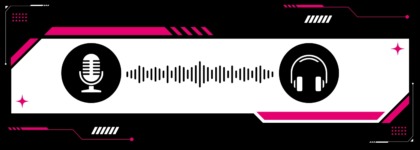Auditory Neuropathy: How Closed Captions Help People with “Brain Deafness”
Updated: June 3, 2019
Closed captions have been used for decades to make audio-visual content accessible to people who are deaf or hard of hearing.
It’s pretty straight-forward how that works: captions communicate the spoken word and other essential sounds, with text displayed on screen at the same time as the audio.
What you may not know is how closed captions are also essential for making video accessible to people with a condition called Auditory Neuropathy Spectrum Disorder.
What is Auditory Neuropathy Spectrum Disorder?
ANSD is a neurological disorder that disrupts the brain’s ability to comprehend the meaning behind sounds.
Previously called Auditory Neuropathy/Auditory Dyssynchrony (AN/AD), the technical term is now auditory neuropathy spectrum disorder (ANSD), or colloquially “brain deafness.”
A WNYC Podcast Only Human ran an episode that chronicles a woman who lives with ANSD and wasn’t diagnosed until adulthood. She evaded diagnosis because she aced her hearing exams. Yet she still struggled to discern speech in noisy environments.
If her ears worked perfectly, then what was the problem?
The problem was in her brain.
An EEG revealed abnormal firing of neurons in her auditory nerve. In a typical brain, neurons respond to sound waves by firing in a synchronous way.
In the brain of someone with ANSD, the neurons fire asynchronously. As a result, the brain struggles to identify sounds and interpret them correctly.
Someone with ANSD may experience severe difficulty having spoken conversations, often exacerbated by competing soundscapes like background music or noisy chatter. They may miss important audio signals like an ambulance siren or a doorbell.
How Do People with ANSD Communicate?
ANSD is a rare disorder, and as such it is often misunderstood or undiagnosed. Communication can be very frustrating for a person with ANSD, especially if they are undiagnosed.
In Overcoming Deafness: The Story of Hearing and Language by Ellis Douek, the author recounts a story of a failed attempt to treat a patient with ANSD. Assuming the problem was in the patient’s ear, they tried giving him hearing aids. This failed spectacularly, with the patient tearing the hearing aids out of his ears in frustration.
That patient had much greater success reading lips to communicate. Since his visual neural function worked fine, he was able to interpret speech visually instead of aurally.
Generally, a person with ANSD will have an easier time communicating visually.
Some possible methods of communication include:
- Written communication
- Lipreading
- Cued speech
- Sign language
Why Closed Captions Help People with ANSD
Closed captions are crucial to making video content accessible to people with ANSD. While they may hear the audio, they will likely have difficulty making sense of it.
Closed captions clear up any misunderstanding a person with ANSD may experience while watching a video. The viewer can rely purely on visual stimulus to follow along, possibly muting the audio to eliminate distraction.
Consider all the movies and YouTube videos that a person with ANSD can enjoy if they have captions!
Who Else Uses Closed Captions?
The deaf and hard of hearing population is just the tip of the iceberg when it comes to closed caption usage.
An Ofcom study in the UK found that only 20% of people who use closed captions are deaf or hard of hearing.
Who makes up the other 80%? All sorts of people:
- People with autism
- People with Auditory Neuropathy
- People with ADD or ADHD
- People with dyslexia or other learning disorders
- People with down syndrome or other cognitive disorders
- People who are not native English speakers
- People who are watching video in a sound-sensitive environment
- People who simply prefer to watch videos with captions — no special reason needed!
Further Reading

Subscribe to the Blog Digest
Sign up to receive our blog digest and other information on this topic. You can unsubscribe anytime.
By subscribing you agree to our privacy policy.






